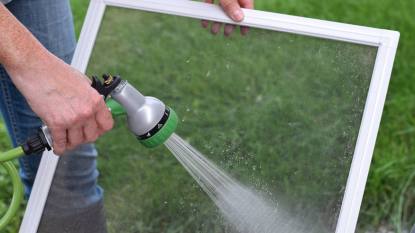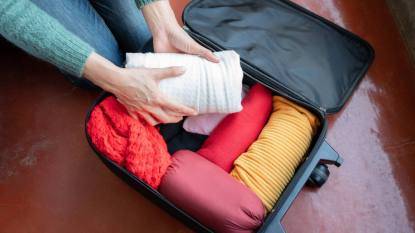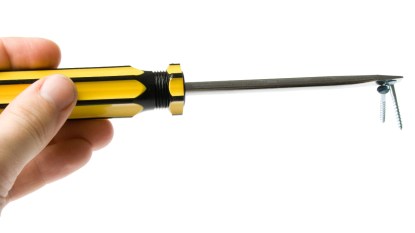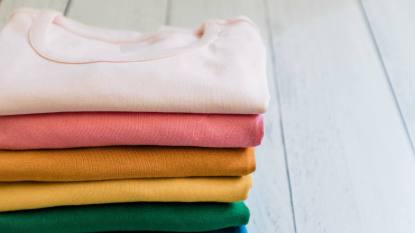How to Dry Clothes Indoors — And Avoid That Mildewy Smell
8 ways to cut drying time so your clothes smell fresh. Plus how to eradicate a smell that's already there
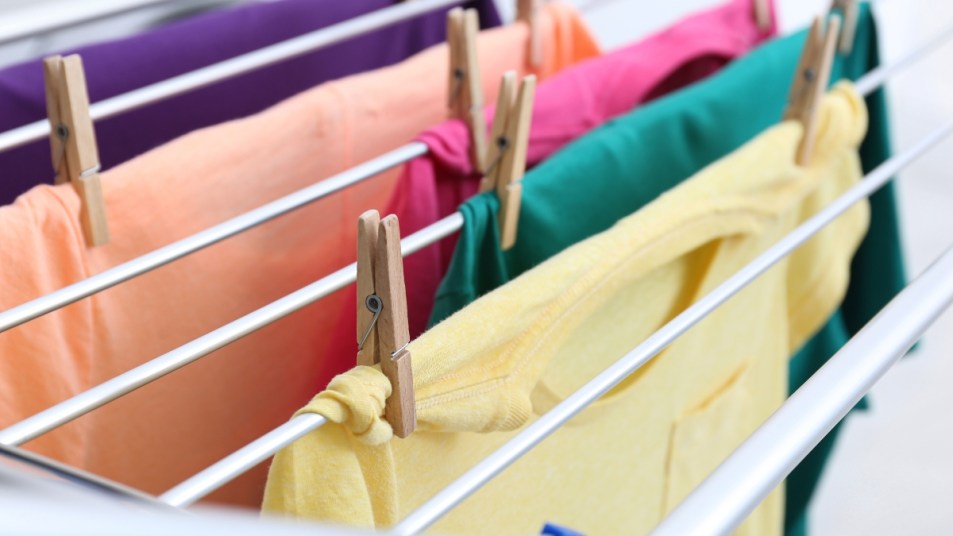
If you’re like us, you’re sometimes willing to throw a favorite old shirt in the dryer and take the chance it may shrink, just to avoid hanging it up in your musty basement. There’s nothing worse than that mildewy smell that comes from leaving wet clothes to dry on their own. Unfortunately, there are garments that you don’t want to take a chance with that will absolutely get ruined if you toss them in the dryer. On a nice sunny day, you can opt to hang everything to dry outdoors, but depending on where you live, that’s not always an option. So we asked cleaning experts how to dry clothes indoors effectively and efficiently without odor.
Why does drying clothes indoors cause that mildewy smell?
When wet clothes are left to dry in an unventilated, dark, wet environment, like your basement, it can become a breeding ground for mold spores and bacteria. These can build up in your clothing over time, eventually leaving them with a permanent odor, cautions textile and fabrics expert George Moore, president of Sew Fine Cabinets.
What are the best ways to dry clothes indoors to avoid smell?
There are many tricks and tips you can try to speed drying time and therefore ensure clothes smell fresh post-wash. Here some easy suggestion, one might be all you need:
When drying clothes indoors, add a dry towel to the mix
Even with a smaller load, it can still take a while to get garments completely dry. A helpful trick, shares Angela Rubin from the cleaning company Hellamaid: “Hanging a dry towel along with any wet clothes.” They dry towel will soak up excess moisture in the air and accelerate the drying time.”
When drying clothes indoors, sort them by material
You may already separate your whites from your colors when washing, but turns out that organizing by fabric type can also make a difference when drying clothes inside. “Thicker materials like towels and jeans take longer to dry than lighter fabrics such as t-shirts and underwear,” says Muffetta Kreuger, founder of Muffetta’s Domestic Assistants. “By grouping similar materials, you can optimize the drying process.” Her tip: Consider hanging items like heavier towels on one drying rack and lighter clothes on another.
Try hanging them in a room with real air flow
If your washer/dryer is in the basement, it may seem most logical to hang clothes in the same room. But moving them to a more ventilated room may be all you need. Airflow is key to avoiding damp and mold when drying your clothing indoors. “Choose a well-ventilated area for drying clothes, preferably near a window or with access to a gentle breeze,” shares Shabbir Alam, founder CleaningTuts. “Proper ventilation helps in speeding up the drying process by allowing moisture to escape.” Rooms that are ideal to help eliminate moisture: Kitchens or bathrooms with extractor fans. Just place drying racks inside and turn on the fans.
Maximize their time in sunlight
Even if you can’t line dry your items outside, you can still make use of the sun’s rays when you dry clothes indoors. If possible, place your drying rack near a window with direct sunlight. “Sunlight not only helps dry clothes faster but also acts as a natural disinfectant, eliminating bacteria and odors,” says Kreuger.
Spread them out
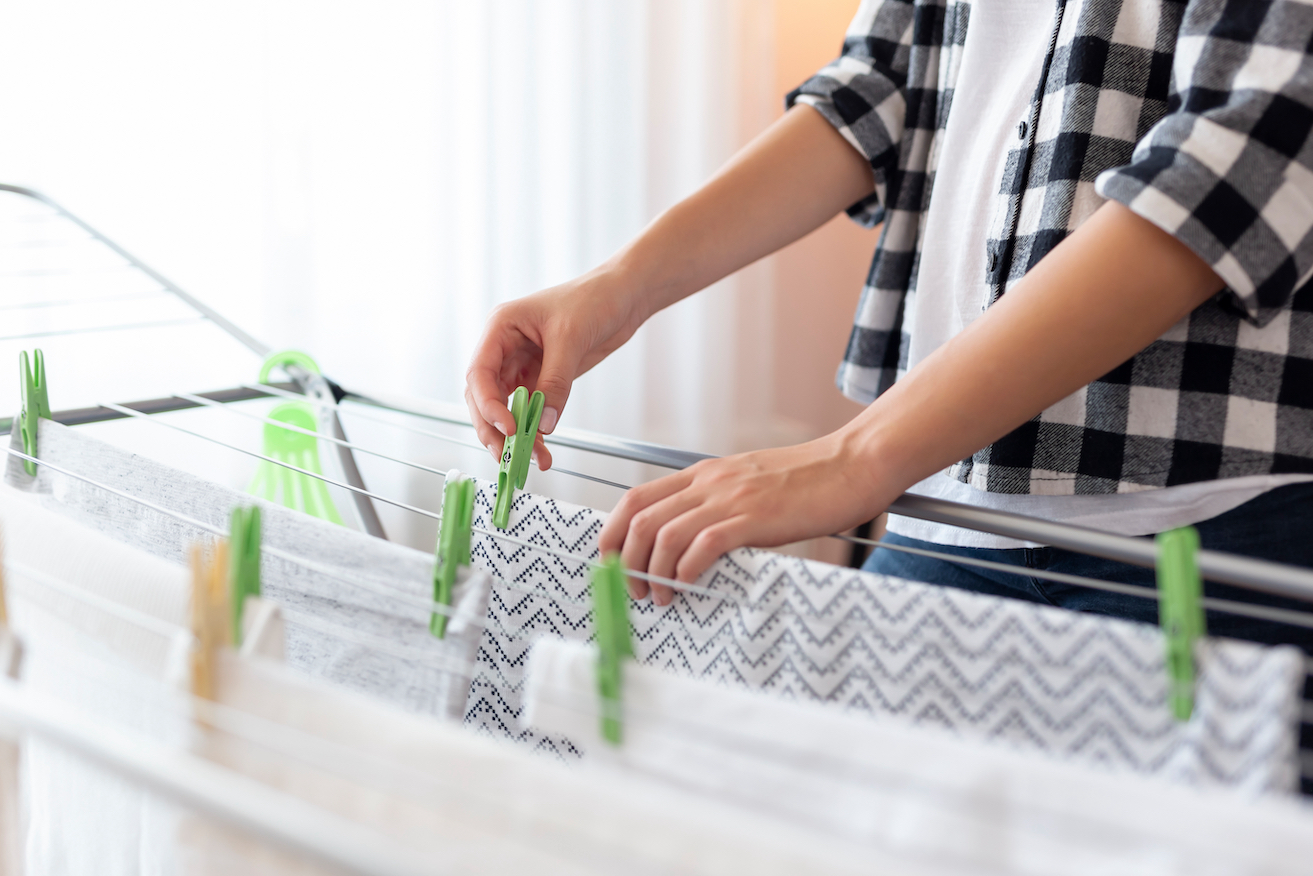
“Try to avoid overcrowding clothes on the drying rack, as this can hinder proper air circulation and lead to longer drying times,” says Alam. “Giving each garment enough space will ensure efficient drying.” Not only will this reduce drying time and curb the risk of that mildewy smell creeping in, it will keep creases at bay.
One hack that works wonders to make space: Place more delicate items like blouses and shirts on coat hangers and hang them on your drying rack. This maximizes space and gets more clothes drying at once. This also saves you time when putting clothes away since you’ll be able to pop them straight in your closet once they’re dry!
Try rotating clothes
With air circulating in a tumble dryer, it makes it easy to get all parts of a garment dry. To get the same results when air drying: “During the drying process, gently flip and reposition clothes to ensure all sides dry evenly,” says Rubin. Doing this throughout the day will make sure every part of the clothing item gets exposed to some air.
Consider a dehumidifier
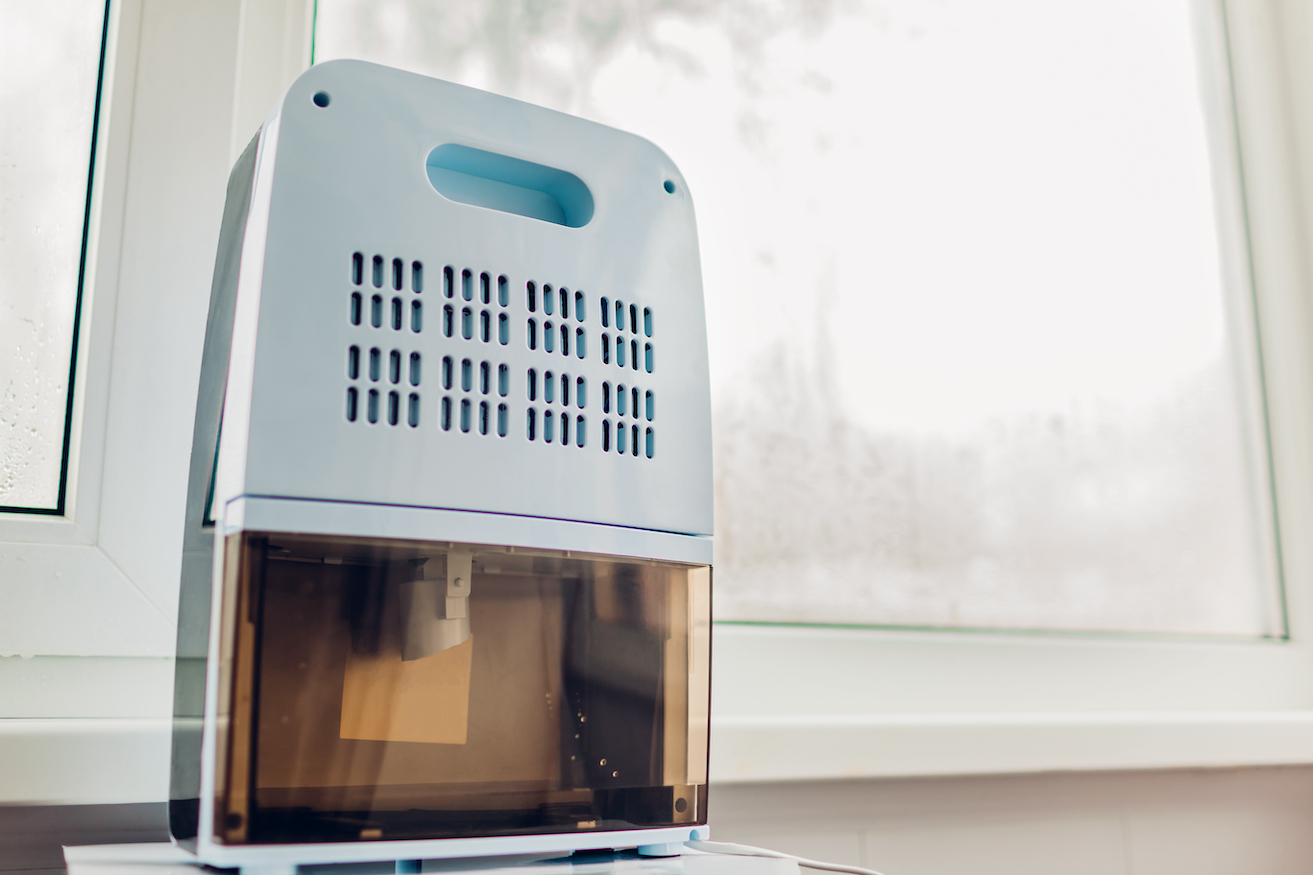
If you’re really concerned about the risk of damp or mold it could be worth investing in a dehumidifier to help extract the excess moisture from the air. Or if you have an air purifier, check to see if it has a dehumidifier function; many do. “By reducing excess moisture in the air, these devices help clothes dry faster and prevent musty odors,” explains Karina Toner, operations manager at Spekless Cleaning. Then no matter how damp the air is, you’re guaranteed your garments get perfectly dry even without an outdoor breeze. Toner recommends the Tenergy Sorbi 1000ml Air Dehumidifier (Buy from Amazon, $89.99). “It’s designed to not only expedite the drying process of clothes indoors but also help prevent musty odors and create a fresher living environment,” she shares.
For more tricks on how to dry clothes indoors, watch the below:
How to get rid of the musty smell if it’s already there?
Although you now know how to sidestep the smell when drying clothes indoors, what if you have garments that already smell like mildew? Thankfully, it’s quite easy to get them fresh again.
Just fill a spray bottle with 1⁄2 cup of water, 1⁄4 cup of vodka and 5 drops of lavender essential oil and lightly mist the garments, says Becky Rapinchuk, founder of CleanMama.com. Vodka’s alcohol kills odor-causing mold and bacteria, while the oil’s scent refreshes and its antibacterial properties sanitize.
Best of all, this is safe on any fabric—including dry-clean-only!
Want more great advice on how to make laundry day a cinch? Click here:
How To Dry Clean Clothes at Home (And Keep Your Favorite Garments Looking Like New!)
How to Hand-Wash Delicate Clothing at Home — And Save Beaucoup Bucks on Dry Cleaning


